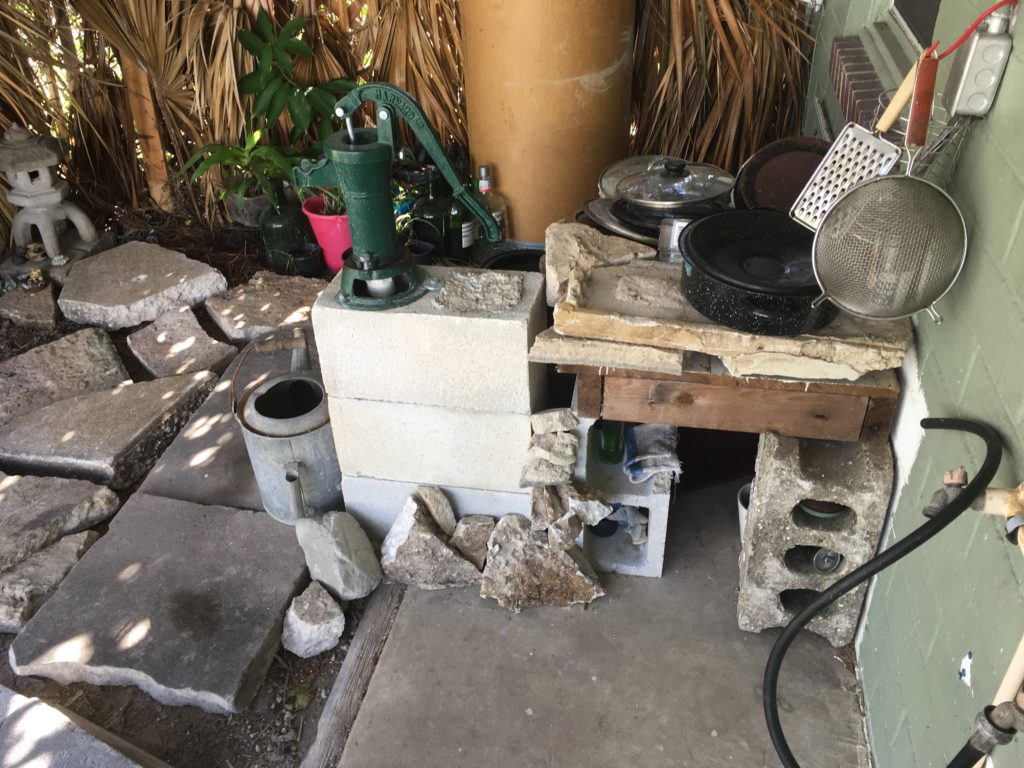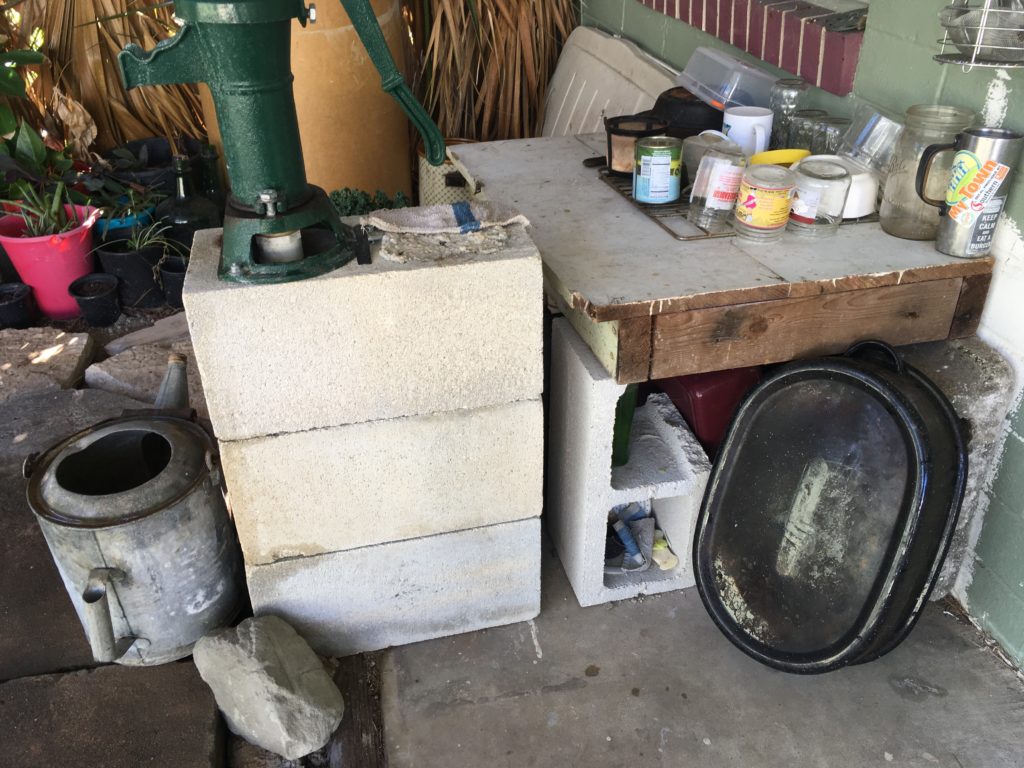

I started out washing dishes outdoors to make it easier to collect water for my yard rather than let water go down the drain. Then I noticed other benefits, including: 1) getting to be outside more, have more opportunities to observe plants & wildlife in my yard; and 2) the indoor environment stays drier (less humid, less prone to damp yucky smells, less attractive to critters) when I mimimize running water indoors.
Photos show two different version of my setup. One is more smooth and rectilinear; the other (my latest version) is more “rocky”-looking to go with the overall look of my shaded patio area. The “rocks” are chunks of concrete that I scavenged from curbside.
Concrete makes a great dish-drying surface. It wicks away moisture (which then evaporates); and it isn’t slippery, so dishes and plates stay put.
I have two water sources to choose from: well water (via the hand pump) or city water (via the faucet on the right). I also have rainbarrels but prefer to save that water for making coffee, for putting directly on the plants, for washing my skin, etc.
An outdoor dishwashing area can be set up with very little space. I even had one on my porch while I was living in an RV park. All in all, even on a cold day, I find dishwashing more pleasant if I can do it outdoors.
The dish liquid and washing-cloth are tucked into one of the niches in the cinder block beneath the dish-drying surface.
I wash dishes in the smallest container possible for the job (saves soap and water). Silverware gets washed in a mason jar if that’s all I’m washing. A full batch of dishes gets washed in a large oval-shaped pan that was originally designed as a baking dish (and can still be used for that purpose also).
My setup is a work in progress, not only in terms of functionality but also in terms of appearance. I’m a strong believer in PLAYING with the design of things. Having fun, trying various things, not getting uptight. Consumerist social norms put pressure on us to be perfect and get it magazine-pretty right off the bat. I’m unlearning that, having fun, and actually end up designing things that work better for me AND look great.
One of my favorite permaculture design principles is “Observe and interact.” In a nutshell, this means make your initial observations, try something, and then observe the feedback from your environment. Then make adjustments accordingly. It’s an iterative process that allows for much experimentation and fine-tuning. And it’s a very low-footprint approach, in contrast with the conventional approach of putting some huge change into place all at once. The latter approach is more vulnerable to failure, and when it fails, is likely to be more expensive.
I hope you allow yourself this kind of experimentation too, in creating and revising the systems that make up your everyday world. Let me know how it goes!
